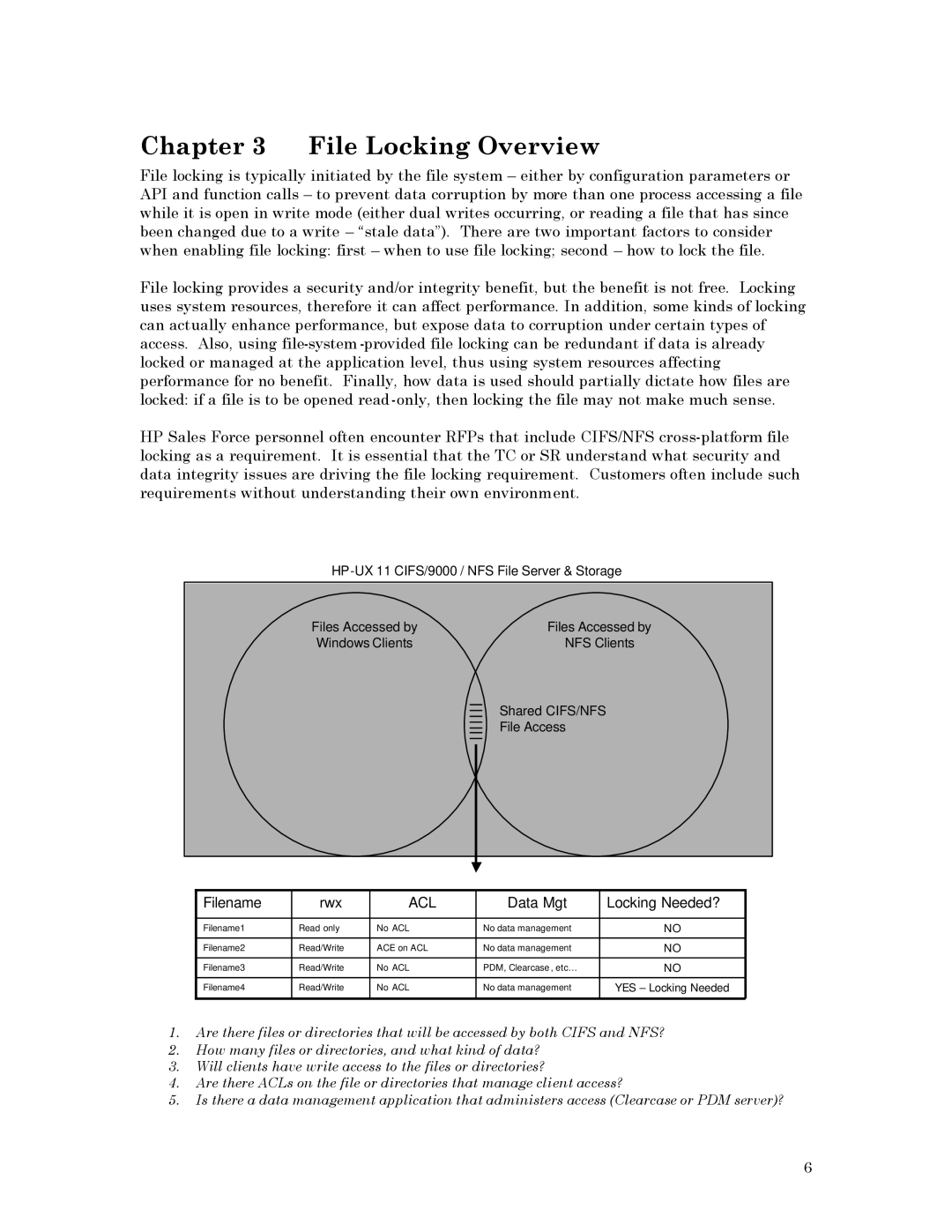
Chapter 3 File Locking Overview
File locking is typically initiated by the file system – either by configuration parameters or API and function calls – to prevent data corruption by more than one process accessing a file while it is open in write mode (either dual writes occurring, or reading a file that has since been changed due to a write – “stale data”). There are two important factors to consider when enabling file locking: first – when to use file locking; second – how to lock the file.
File locking provides a security and/or integrity benefit, but the benefit is not free. Locking uses system resources, therefore it can affect performance. In addition, some kinds of locking can actually enhance performance, but expose data to corruption under certain types of access. Also, using
HP Sales Force personnel often encounter RFPs that include CIFS/NFS
Files Accessed by | Files Accessed by |
Windows Clients | NFS Clients |
Shared CIFS/NFS
File Access
Filename | rwx | ACL | Data Mgt | Locking Needed? |
|
|
|
|
|
Filename1 | Read only | No ACL | No data management | NO |
|
|
|
|
|
Filename2 | Read/Write | ACE on ACL | No data management | NO |
|
|
|
|
|
Filename3 | Read/Write | No ACL | PDM, Clearcase , etc… | NO |
|
|
|
|
|
Filename4 | Read/Write | No ACL | No data management | YES – Locking Needed |
|
|
|
|
|
1.Are there files or directories that will be accessed by both CIFS and NFS?
2.How many files or directories, and what kind of data?
3.Will clients have write access to the files or directories?
4.Are there ACLs on the file or directories that manage client access?
5.Is there a data management application that administers access (Clearcase or PDM server)?
6
